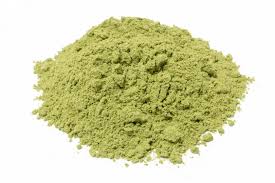ALFA ALFA LEAF LEAVES CUT
Alfa Alfa Leaf Cut
Common name
Lucerne/ Rijka/ Rajko/ Zi Mu/ Chilean Clover/ Purple Medicle /Buffalo herb / Sanfoin
Scientific name
Medicago sativa
Kingdom
Plantae
Family
Fabaceae
Background and native countries
Alfa Alfa is a legume that appears to have emanated in South-Central Asia & was first cultivated in primitive Iran. It was preceded by Greece around 490 BC when Persians intruded in the Greek empire.
Cropping and harvesting
There is a multitude of ways & options to harvest Alfa Alfa, such as cropping at the bud stage, 10% bloom, half bloom, full bloom, or even by the calendar. Advanced research has shown that herb minerals & eatable nutrients are highest during the succulent growth phase and slump during flowering and maturity, while fiber ratio escalates.
Taste and aroma
Alfa Alfa is a herbaceous perennial plant coming from the Fabaceae or pea family. It has a lunatic, warm, & ethereally sweet flavor with a lush green tinge.
Culinary uses
Alfalfa sprouts are added in salads and sandwiches to augment the taste as well as nutritional value. Its leaves are dried for supplements,& sprouts are eaten with meals. It is added to meals and menu for garnishing the dishes, which make people grab some bite.
Benefits and medical uses
Alfa Alfa is low-calorie, nutrient-rich food. It is a rich source of fiber content that doesn't let cholesterol accumulate and prevents heart problems. It also helps in losing extra pounds by increasing satiety. It's loaded with vitamin A, B, C, & K. It's a reasonably good source of copper, magnesium, calcium, potassium, iron, & the list is not short.
This grassy flavored herb is beneficial in treating diabetes, LDL, urinary tract infections, menstrual issues, arthritis. In addition, being a plant-based galactagogue, alfalfa helps in breast milk production.
Storage
Dried alfalfa can be stored for up to nine months when rapped within a plastic bag, made airtight, and handled appropriately.





















